




2. Letter from the Editor By Juanita Asapokhai
3. Letter from the Creative Directors By Anastasia Glass & Hami Trinh
4. Supreme Shift: Tufts Admissions Post-Affirmative Action By Emara Saez & Sacha Waters

8. Structures to Sustain Us: Exploring the Creative Writing Community at Tufts By Ruby Goodman
10. For a Portrait of Dorian Gray By Anushka Gupta
11. Autumn Felled By Alex Herz
12. Caught in a Safety Net: Understanding Administration’s Relationship with Social Events By Alec Rosenthal 14. Creative Inset By Aviv Markus

18. Threads of Solidarity: The Symbolic Power and Global Impact of Clothing By Sophie Fishman
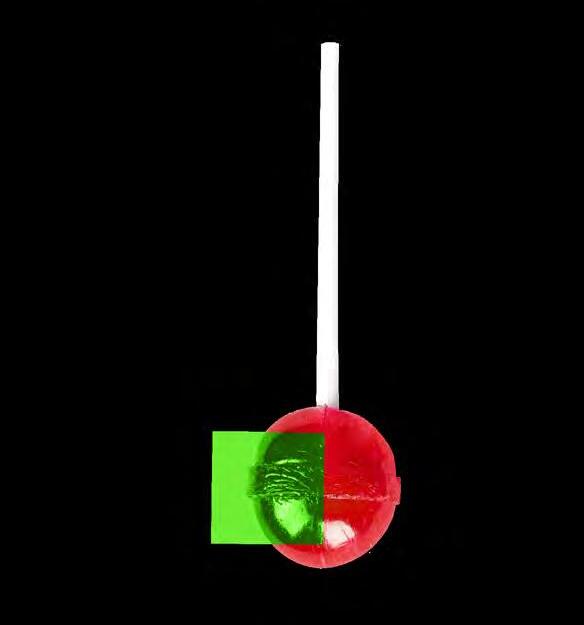
20. AI Music is Here: Get With It By William Zhuang
22. Art Can Be Painful. Let’s Welcome the Challenge. By Leah Cohen
24. A Case For (and Against) Everyday Joy By Veronica Habashy
26. Our Relics, Our Pasts By Erin Zhu
28. Offering By Spencer Vernier 29. Crossword! By Joyce Fang






Editor-in-Chief
Juanita Asapokhai
Editors Emeritus
Melanie Litwin
Amanda Westlake
Managing Editor
Emara Saez
Creative Directors
Anastasia Glass

Hami Trinh

Feature Editors
Ruby Goodman
Rohith Raman
News Editor
Kara Moquin
Arts & Culture Editors
Sophie Fishman
Ava Vander Louw
Opinion Editors
Lucy Belknap
Megan Reimer
Campus Editors
Staff Writers
William Zhuang
Layla Kennington
Erin Zhu
Leah Cohen
Billy Zeng
Joyce Fang
Matilda Peng

Seun Adekunle
Bella Cosimina Bobb
Spencer Vernier
Sacha Waters
Anna Farrell

Designers
Madison Clowes
Maria Cazzato
Aviv Markus
Rachel Li
Kaya Gorsline
Unmani Tewari
Lead Copy Editors
Ashlie Doucette
Alec Rosenthal
Copy Editors
Sofia Valdebenito
Emma Castro

Podcast Team
Caroline Yang
Emily Pham
Isaac Ulloa Antonio
Tamara Setiadji
Erin Guy
Jamie Doo
Soraya Basrai
Eden Weissman
Staff Artists
Zed van der Linden
Maria Cazzato
Phoebe McMahon
Mariana Porras
Chileta Egonu
Stella Omenetto
Ava Hudson
Annica Grote
Elika Wilson
Adina Guo
Website Manager
Clara Davis
Contributors
Bronwyn Legg
Anushka Gupta

Clara Davis
Eli Marcus
Poetry and Prose
Editors
Veronica Habashy
Neya Krishnan
Voices Editors
Ivi Fung
Eden Weissman
Art Directors
Audrey Njo
Uma Edulbehram
Creative Inset Lead
Aviv Markus
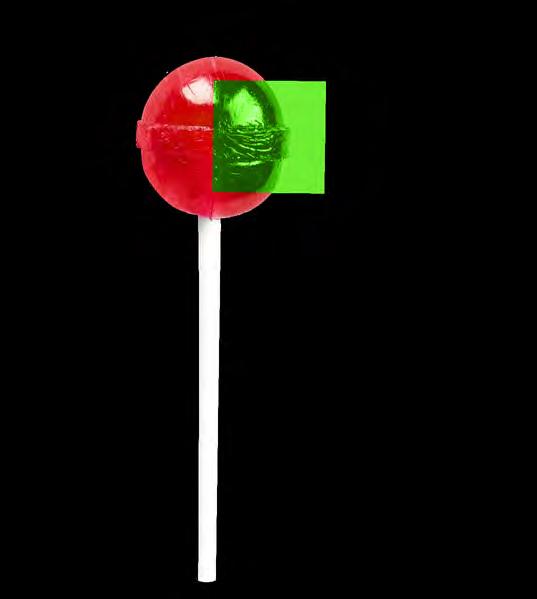
Madison Greenstein
Mia Ivatury
Miles Kendrick
Anne Li
Publicity Directors
Aatiqah Aziz
Sofia Valdebenito
Publicity Team
Emma Itturegui
Francesca Gasasira
Podcast Directors
Grace Maisello
Noah DeYoung

Alex Herz
Treasurer
William Zhuang


The ephemeral wave of unfiltered joy as it washes over you. Coldwater plunging in the heat of July; a slice of chocolate cake, especially when it’s no one’s birthday; kind moments held with oneself. Cathartic, stunning, rich aftertaste of a grin.
Dear reader,

























When I think about what my semester as Editor-in-Chief of the Tu s Observer has meant to me, all that really comes to mind is the song “ ere’s Too Much Love” by the Scottish band Belle and Sebastian. It is honest, and narrates, over the course of three minutes and 27 seconds, an internal con ict–the song’s speaker describes the stress of being idealized by a lover while experiencing a serious identity crisis. Eventually, however, he realizes that his e orts and anxieties about revealing his “true self” are secondary to the feelings that are blooming within him, singing, “there’s too much love to go around these days”. What’s more important is the presence of love, which covers a variety of faults.






I love the Observer—love looks like too short a word for a feeling so big—the people and the product. I hold such deep respect for the tenacity, intellect, stamina, artistry, and dedication of my peers involved in the making of this magazine.

ere are many people who believe that words (despite their form being their function) are limited in their capacity for communication, that the English language (or language in general) has hard barriers held in place by grammar, linguistics, or physiology that force certain emotions, sensations, and dreams to remain ine able. I disagree—I think the delight of writing is in the e ort to articulate the ine able. e tools and outcomes of writing are diverse; anyone can write, and with the help of others, I’d go as far as saying anyone can do it well. It’s what makes writing such a diverse and democratic art form.





Journalism is slightly di erent. It requires research, fact-checking, close attention, and, to me, equal parts compassion and courage. To report is to bear witness, to disrupt, to educate, to mobilize, to celebrate, to share, to upli , to protect. e necessity for principled journalism is stronger now than ever. e community that has bloomed in the pursuit of this goal at the Tu s Observer makes me proud beyond belief.








And there really is too much love to go around these days. I am beyond grateful for the countless number of people who have lled my life with joy through our time together on the O. ank you to my phenomenal/amazing/beloved/ brilliant managing board–Anastasia and Hami, and to Emara, who I am more than con dent in and thrilled to pass the EIC torch on to. ank you to the entire Fall 2023 sta , whose talent and dedication have been consistently admirable and awe-inspiring. ank you to my former EICs Melanie, Amanda, and Sabah, my sage guides and points of reference for all things Observer. I think back o en to my rst piece written and published in the Observer, an Opinion article disentangling a web of anti-blackness and anti-Asian racism using scholar Claire Jean Kim’s theory of racial triangulation. I remember my semester on Arts & Culture with Sabrina, and in Poetry and Prose with William. I think about the poems and leditors I’ve written since then, the articles I’ve edited, the writer I was, and the person I’ve grown into–and . It has all been such a pleasure.

With pride, love, and appreciation, Juanita Asapokhai, Editor-in-Chief smile















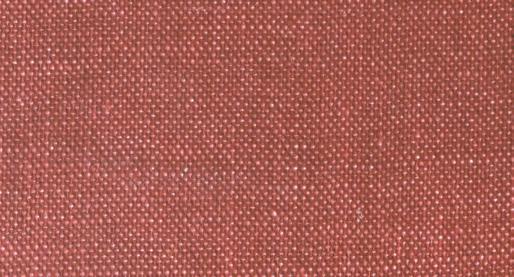

As we depart from our editorial rollercoaster, we can’t help but marvel at the chaos we’ve collectively orchestrated. From 3 a.m. delirium to printed matter, it’s been a ride—both unpredictable and oddly poetic.
We want to express our deepest gratitude to everyone who has dedicated their time to making art and writing for the O, especially our team of lovely designers. Your eyes and idiosyncrasies have made this magazine what it is—a re ection of the beautifully messy mosaic of our community.






Tu



As we disband from this season of restless nights and dawns, let’s carry with us not just memories of deadlines and patience, but the unique spirit that made the Tu s Observer more than just a student publication. Here’s to many more pages of student creativity.
Peace & love,



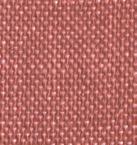






























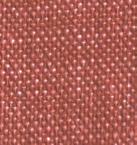

















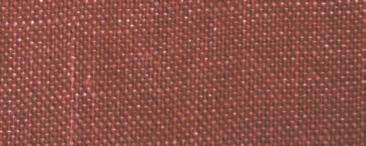



By Emara Saez and Sacha Waters


Over the summer, the world of higher education received news that would alter the landscape of college admissions forever: the Supreme Court had ruled to end race-conscious admission programs at colleges and universities. Since the 1978 ruling in Regents of the University of California v. Bakke, the Supreme Court has allowed colleges and universities to consider the race of applicants in admissions in an effort to remedy the underrepresentation of minorities in higher education. It’s a precedent that has been upheld many times since, such as in the 2003 case and in the 2013 and 2016 cases
many, then, that after 45 years of legal pre cedence, the Supreme Court had changed its tune on affirmative action. was extremely disheartening to see that we’re regressing in society when it comes to social and racial equality,” said senior Suzune Montag. “The effects of discrimination start as early as preschool, as kids in low-income neighborhoods have less well-funded schools and are more likely to be discriminated against by teachers. These issues [develop] into the inequalities we see in higher education today, and affirmative action is necessary to rectify these systemic inequalities.”


Michelle Zhang expressed a similar sentiment, saying that “race re ally impacts every sector of your life.” To Zhang, affirmative action is a valid and beneficial method of determining class admission. “[Race] really does matter”
when it comes to admissions, because “when you’re doing admissions, you don’t see the actual person, you just see the name, you just see the things on paper,” Zhang said, suggesting that raceconscious admissions add necessary context to college applications.
So what was the reasoning behind this reversal? The case presented to the court was brought by Students for Fair Admissions, a nonprofit legal advocacy organization founded in 2014 by conservative activist Edward Blum. The organization argued that using race as a factor in admissions policies violates the 14th Amendment’s Equal Protection Clause by placing white and Asian students at a disadvantage compared to Black and Brown students.


court’s 6-3 conservative majority agreed with their assertion. It was a decision that runs counter to public opinion, as 63 percent of adults believe that the Supreme Court should not prohibit colleges and universities from considering race during admissions. Regardless of public opinion, the court remained adamant that its ruling would level the playing field of college admissions. The court also wrote a three sentence exception at the end of the ruling for the nation’s military academies which can continue considering race in admissions because of “potentially distinct interests.”
Chief Justice John Roberts wrote the majority opinion for the six conservative justices, arguing that “Many universities have for too long… concluded, wrongly, that the touchstone of an individual’s identity is not challenges bested, skills built, or lessons learned but the color of their skin.” According to the conservative majority, “Our constitutional history does not tolerate that choice.”
Justices Sonia Sotomayor, Elena Kagan, and Ketanji Brown Jackson wrote dissenting opinions to the court’s majority ruling. Justice Ketanji Brown Jackson, the court’s first Black female justice, disagreed with the logic behind the decision. She wrote, “With let-them-eat-cake obliviousness, today, the majority pulls the ripcord and announces ‘colorblindness for all’ by legal fiat.” Jackson continued that the “ruling makes
things worse, not better. The best that can be said of the majority’s perspective is that it proceeds (ostrich-like) from the hope that preventing consideration of race will end racism. But if that is its motivation, the majority proceeds in vain.”
Even before the SCOTUS ruling, there has historically been a stark drop in minority admissions in places where affirmative action has been eliminated. One such example is at the University of California, Berkeley in 2016 and 2017, when a state referendum banned the use of race in admissions. This was also observed by researchers after affirmative action was banned in Texas, Washington, and Florida in the 1990s.
Supporters of affirmative action argue that there is one glaring problem with the ruling: colleges can still use metrics for admissions that disadvantage minority students, such as preferences for legacy admissions, athletes, and children of staff or faculty. This claim is backed by a multitude of examples, but one that made waves in American society was the 2019 college admissions scandal. This case highlighted how children from affluent families have used both legal and illegal means to get accepted into higher education institutions, effectively putting them at an even greater advantage over their lower-income counterparts. Shortly after the court’s ruling, Lawyers for Civil Rights filed a lawsuit using this reasoning on behalf of the Chica
Project, the African Community Economic Development of New England, and the Greater Boston Latino Network. Their lawsuit alleges that the students who receive that preferential treatment—children of donors and legacies—are “overwhelmingly white,” and make up as much as 15 percent of admitted students. Shortly thereafter, the US Department of Education began an ongoing civil rights investigation into whether Harvard University discriminates in its admissions process by giving preference to legacy students.
In a written statement to the Observer, senior Victor Aguilar explained his problem with allowing preferential treatment in admissions to continue, saying that his peers at private high school “expected to go to college, [but] I had to fight for a chance to get there. College admissions filter students for universities, and historically filter students of color out. Affirmative action gave us a chance; it gave us hope. The money points to reasons behind protecting legacy and athlete admissions. Athlete admissions are a grayer area, but legacy admissions are unnecessary.”
Critics of affirmative action have suggested that there are other factors for consideration that could increase the diversity of undergraduate classes, but admission administrators across the country say that schools that have tried to raise the numbers of Black and Latino students without any consideration of race have found that

no other criterion is as effective at increasing diversity.
Affirmative action is still practiced based on criteria other than race. Many historically male-dominated programs grant affirmative action to women, which has greatly increased the percentage of (predominantly white) women who receive college degrees. Today, young women are more likely to enroll in college than their male counterparts, and women 25 and older are more likely to earn a college degree. A significant cause of this discrepancy is personal choice; 34 percent of men say the reason they did not attend college was because they simply did not want to (compared to roughly 25 percent of women), while 44 percent of non-college educated women say it was due to financial reasons (compared to 39 percent of men). However, some experts point to the current gender gap in college education as evidence that the largest beneficiaries of affirmative action have been white women.
Despite this, the affirmative action debate has historically been centered on race-conscious admissions. When someone brings up the term “affirmative action” in a political debate, it is often assumed that they mean race-conscious admissions, despite the fact that genderconscious affirmative action remains intact in many male-dominated spaces, such as engineering or other STEM-based
programs. Gender-conscious affirmative action, or any other form of diversityconscious admissions, such as admitting students from underrepresented states, is currently not subject to the same level of scrutiny as race-conscious affirmative action. Some experts have posited that the intense focus on race within the issue suggests that the pushback against affirmative action is part of a conscious effort to reduce racial progress in particular.
Given the court’s June ruling, universities including Tufts will be forced to reimagine the programs and strategies they use to consider thousands of applicants in the coming years. In an email sent to the university from the Office of the President on June 29, former president Tony Monaco and current president Sunil Kumar jointly wrote that “nothing the court said today will change our institutional values and our commitment to diversity, equity, inclusion, and belonging.” In that same email, the university shared that “a working group of internal stakeholders and external experts has been meeting… [this group], along with a newly formed executive strategy group, will be analyzing the court’s decision and reasoning to create a specific plan that will continue our diversity efforts while respecting the law.”
While universities can’t explicitly use proxies for race anymore, they may use other factors to create a diverse environment, such as considering the zip codes
where students live. Additionally, students will still be allowed to write about their lived experiences with race and ethnicity in their personal essays.
When asked what she thought Tufts should do in response to the decision, Montag said the university should follow in the footsteps of other elite institutions by incorporating “an optional supplemental essay through which students can discuss aspects of their background or identity that they believe are important.” Montag believes the addition of this essay question could benefit the Tufts admissions pool, saying that, “because there is a lot of nuance when it comes to encouraging diversity, a question like that would bring more to the story and allow admissions committees to support students from all backgrounds and encourage diversity.”

At Tufts, conversations about the role of race in admissions date back to the 1960s, when the university made “a considered decision to increase the social, geographic, and ethnic diversity of the undergraduate student body,” according to Light on the Hill, the second volume of the history of Tufts University published in 1986. It was not until a record of the racial and ethnic background of all students was required by the federal government, effective in 1968-69, that “the ‘numbers game’ became a popular indoor sport.” In 1965, then university president Nils Yngve Wessell made his annual report to the trustees
calling for greater minority representation in the student body and on the faculty, at a time when the number of black students stood at 25. By 1967-68, the number doubled. Over time, the number of minority students admitted slowly increased, especially those of Asian and Puerto Rican heritage.
According to the same issue of Light on the Hill, the composition of the student body shifted greatly over the 1970s and 1980s not only with regards to race, but also class, as “the great bulk of the students came from higher economic and social strata than ever before by the end of the Hallowell administration.” Once predominantly Protestant middle and lower class, the new composition of undergraduates began to reflect the contemporary “more religiously differentiated and ethnically mixed student body.”

Since then, Tufts admissions’ office has had a steady increase in the number of minority students enrolled in each class, with the latest class of 2027 including, of admitted U.S. students, 57 percent students of color. However, the shift to students from higher socioeconomic backgrounds that occurred under the Hallowell administration during the 1960s and 1970s remains true today, with 77 percent of the student body coming from households in the top 20 percent of the income earners and the median family income of a student at Tufts being $224,800. When it comes to encouraging diversity, a question like that would bring more to the story and allow admissions committees to support students from all backgrounds and encourage diversity.
It will take time before accurate observations about the impact of the overturning on the Tufts student body can be made. Historical precedent suggests that minority admissions may drop dramatically, but the extent will likely vary across institutions. The decision’s impact on individual campuses largely depends on the goals and efforts made by each university. A university that makes no extra effort to admit racial minorities following the ruling will likely face a more significant drop than a university that chooses to take zip codes or lived experiences into account.
Whether Tufts will stay true to Monaco and Kumar’s statement remains to be seen. Prior to the decision, the Tufts
student body was becoming increasingly racially diverse; 44.7 percent of the cur rent senior class of 2024 identify as nonwhite (6.5 percent of whom are Black), compared to 57 percent of the class of 2027 (12 percent of whom are Black). This increase suggests that Tufts em ployed race-conscious admissions to cre ate an increasingly diverse student body. However, under the new ruling, the Tufts admissions team may have to make a concerted effort to foster this trend, or it could soon fall by the wayside.
Zhang believes Tufts will fall short of continuing to promote diversity in sub stantive ways. Zhang points toward the fact that, although the percentage of Asian American students has increased, the funding the Asian American Center receives has stayed the same. “Even if there is a subgroup dedicated towards students of color on this campus, regardless, they still have to fight for their ability to exist,” Zhang said.

It remains to be seen whether the administration, under Kumar, will develop a new plan that effectively promotes diversity on campus in a post-affirmative action world. However, Tufts may choose to forgo this and adopt the legal statute.
This year’s Regular Decision applications close on January 4, while Early Decision results are released in mid-December. The impending outcomes of the admissions for the class of 2028 will shed light onto the initial impacts of overturning affirmative action, and how it will affect the makeup of the matriculating class come next September. O


By Ruby Goodman
Senior Maeve Hagerty has always wanted to be an author. “That was my childhood dream,” she said. “I’ve been writing stories for fun, probably since I was 10.” Upon arriving at Tufts, Hagerty decided that she would pursue this passion by joining a writing workshop.
Writing workshops at Tufts operate on their own rhythm, differing from most other classes one would encounter as an undergraduate. In a typical workshop, no more than twelve students shuffle into class to talk about two or three of their peers’ short stories, which they’ve all carefully read ahead of time. By the first few classes, they have become accustomed to the ceremony of workshop. The writer of the day begins by reading an excerpt aloud from their piece; this is usually the last time the writer will speak for the next 45 minutes, as their classmates launch into a discussion about the style, themes, successes, and failures of the story, consulting detailed notes they’ve taken on their own copies. To Professor of the Practice and Creative Writing Director Simon Han, there is something significant about the care with which one’s work is examined in workshop. “For me, when I took workshops as an undergrad, it was the first time I felt like something I was writing was taken seriously by strangers,” Han said.
By the end of the class, the writer will have pages full of scribbled notes to bring home and consider before they present their next piece. As the semester goes on, students begin to familiarize themselves with each others’ writing styles. “[You] start to see trends in certain people’s writing, and you start to see motifs that pop up

over and over again or totally different paths in a person’s writing. I find that that’s the most interesting part of the actual seminars,” Hagerty said.
Workshop classes—especially graduate MA or MFA writing programs—have a long history in academia, most of them modeled on the Iowa Writers’ Workshop at the University of Iowa, founded in 1936. The Iowa Writers Workshop was the first creative writing degree program in America and has remained the most prestigious. According to its website, the purpose of its model is to encourage students and help them mature their talent. “If one can ‘learn’ to play the violin or to paint, one can ‘learn’ to write,” the website states.
According To Anna V. Q. Ross, a lecturer in the Tufts Department of English and a professor of one of the Introduction to Poetry workshops offered this semester, the environment of workshop allows for students to transform the artistic process into something collaborative. “We often think of writing as a solitary act,” Ross said. “Of course, you know, no one else is putting those words down on the page. But we write to communicate. And so it’s very important to bring that work to other people and see what they get from it. And so, in that way, writing becomes a very communal and shared process.”
It is this tight-knit community that makes workshop both sacred and vulnerable. “As a person who tends to be very perfectionist in my leanings, I always feel selfconscious going into workshop,” Hagerty said. “But you never leave workshop feeling self-conscious… You don’t feel like
you’ve left with a negative experience. Because the whole idea is, you know, people have read your writing and they’re trying to help you improve.”
According to Ross, students progressively become more comfortable giving and receiving feedback as they adjust to the format of workshop. “If I’m doing my job right, I talk less and less and less as the semester goes on,” she said.
Because writing is an art form, and therefore a form of self-expression, workshops can often lead to deep and unique
bonds among its members. “It becomes a space where I think you feel very protected as a writer,” Han said. “Hopefully, you feel like you can take risks and stumble, right? We all know... this is all work in progress. So the idea is that we can sort of share and be vulnerable with one another, even if we started out as strang - ers.”

But workshop— though important to the writers who participate—is
a limited structure, and writers on campus may crave literary spaces beyond the walls of the classroom. “Once we exit that structure,” Han said, “we have to build new structures to sustain us. And so that’s part of what we try to do through the English department… to create spaces for students who are interested in writing and reading to meet one another and build their own community from there.”
One such community is Parnassus, a student-led creative writing club at Tufts. Each week, the members of Parnassus gather in Braker Hall to write alongside one another for 50 minutes. To the president of the club, Tufts senior Steph Gratiano, Parnassus is an opportunity for students to make intentional room for writing in their lives. “In a lot of ways I feel like Parnassus sort of gave me space to write back when it was sort of disappearing from my life,” she said. Parnassus is not all about writing in silence; the club integrates icebreakers, workshops, and communal writing exercises like sixword-stories into its meetings. It also plans outings during the semester, including trips to the Isabella Stewart Gardner Museum and the Trident Booksellers & Cafe in Boston. All of this has helped nurture a reliable community for Parnassus’ members. “There’s a certain amount of solidarity. Like, we’re all having fun here, or we all have writer’s block here. And it’s fine. I think that community is nice,” Gratiano said.
Parnassus is not the only club through which students can share and discuss creative writing. Future Histories, Tufts’ premier literary magazine, is focused on centering students’ creative expression and revising work collaboratively. According to their website, Future Histories hopes “to give Tufts writers and artists a megaphone in which they may yell art, an energized space to connect and col-
laborate, and an opportunity to familiarize themselves with the submissions process.”
In recent years, faculty and students have made many efforts to bolster the creative writing scene at Tufts. The English department has hosted open mic nights where students can read their creative work, faculty readings, and even workshops facilitated by professional writers outside of Tufts. Many of the events are organized in collaboration with the evergrowing and student-led English Society, made up of “English Majors, Minors, and Enthusiasts,” according to their Instagram. The English Society also holds its own events. Han’s dream for the future of creative writing at Tufts is that the efforts towards fostering a creative writing community on campus multiply. “My hope is that… writers on campus really feel like they can find one another and that they can depend on this regular system of support both within class and outside of class,” he said.
Creative writing at Tufts is not just meant for English majors and minors. Ross, for example, has had scientists, engineers, and other STEM majors in her workshops this semester. “I like very much that [you] don’t have to be an English major in order to take a creative writing class,” Ross said. “And I think that I often have students who come into my classes who are interested in taking a creative writing class because they see it as complementary, complementing something else that they’re working on.” Parnassus and the English Society are also open to students from any discipline. “Our last president was a computer science major, I’m a chem major,” Gratiano said. “Most people are actually STEM majors in this group.”
Whether through workshop classes, clubs, or organized events, writing creatively while in a community is—to many Tufts students and faculty—a deeply meaningful undertaking. “I find it really emotional at times,” Hagerty said of her experience in workshop. “Honestly, it’s kind of nice to know that there [are] other people out there who are also spending their time thinking about how to depict the world around them… even though it sounds kind of cliché, it is actually really a powerful experience.”

By Anushka Gupta
I imagine loving someone whose droning self-indulgence could make me comatose, and yet I dream of her only as I’m salted and brined by sterile hands like the painter loved Dorian, quietly adoration sits upon my temple to be contemplated only by those who clip their cuticles and sweeten their coffee overripe.
I’d love her as Henry loved Mr. Gray: some pathetic creature trapped beneath wood rot I’d be swirling in sour ocean, flailing, disembodied, hypoxic, and yet my heartbeat unequivocally intact like a man loves himself.
And years later upon my reflection, “Love,” I would realize, “is the miracle that occurs between train tracks and tepid breath as we lay ourselves barren at each other’s mercy.” Good god, best pray that train will stop.

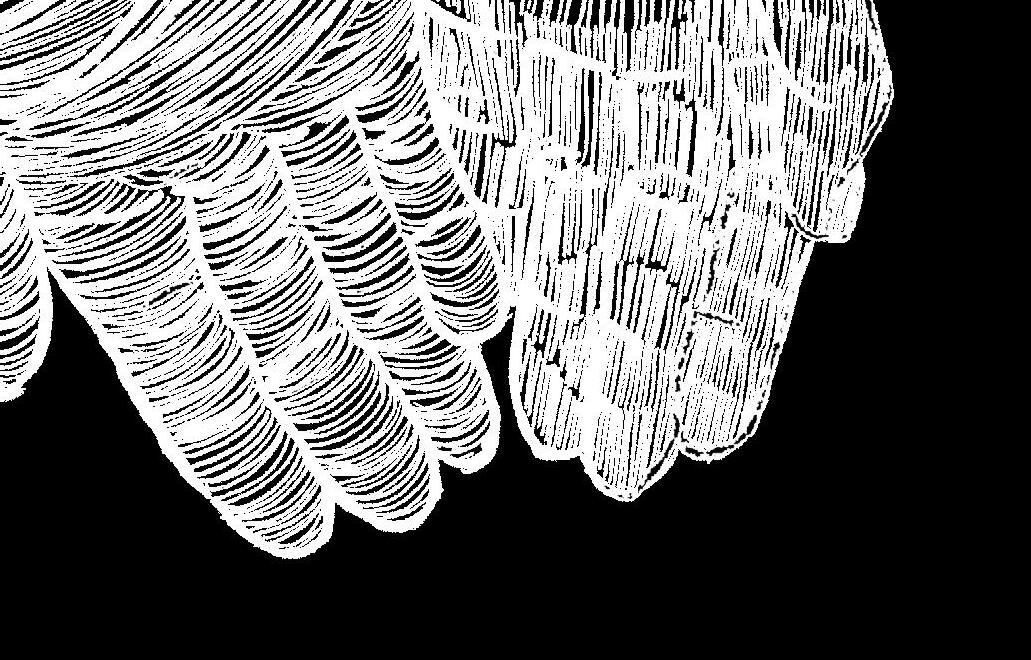

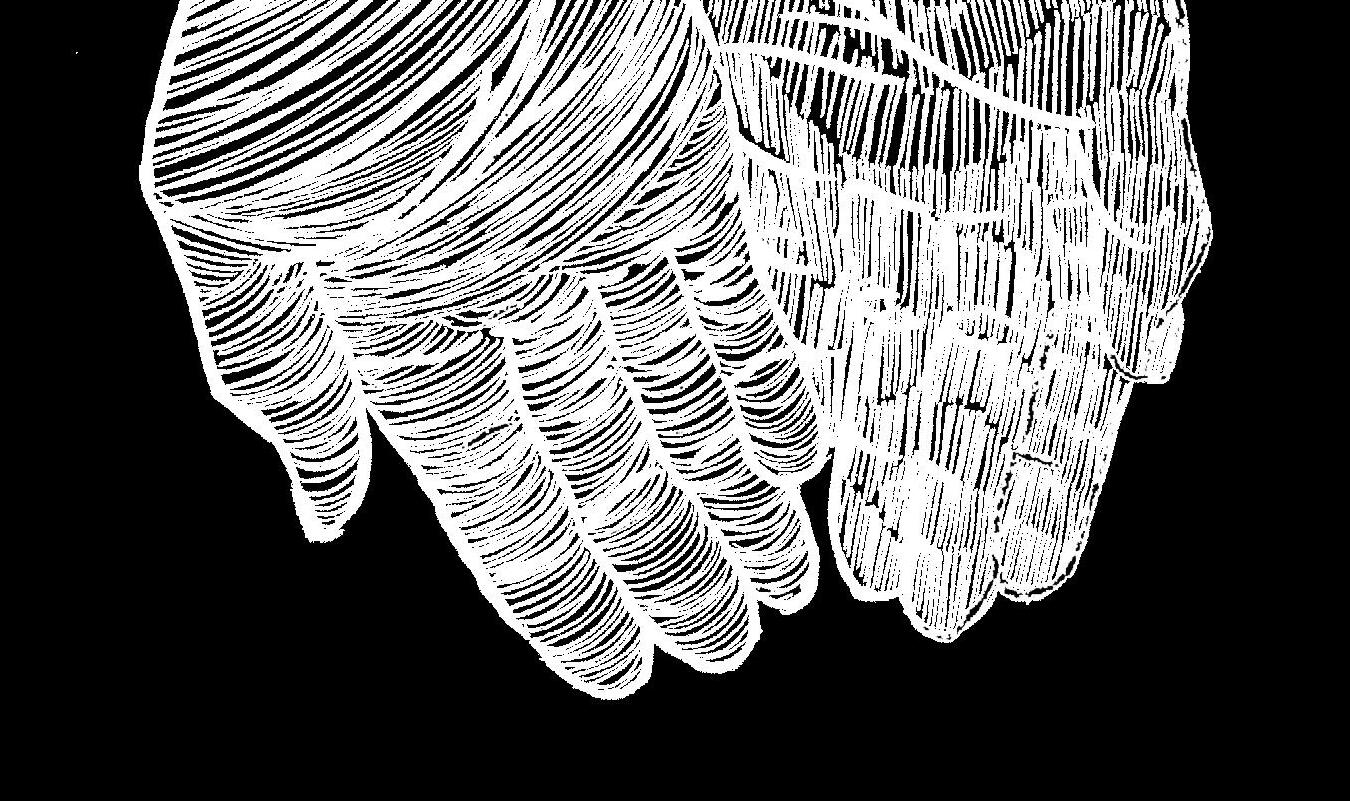
The roaches walk with me. Tip-tapping a little dance, keeping me warm and held. We skip over the cracks in the cement. We hope, silently, that our mothers will never die. The sun hasn’t come out yet. Maybe it will peak out in the next few hours. Maybe not. I can feel how my feet press into the soles of my shoes, imprinting five toes and a heel into soft rubber. The roaches don’t wear shoes, though I’m sure they would if someone were to make them. Then we could all wear shoes, but right now I wear shoes and they don’t. Regardless of whether or not we are wearing shoes, we are walking. Down empty streets. Past empty buildings. They seem to be empty, but I’m sure they’re filled with people, roaches too. Autumn’s first chill came early, but they don’t seem to mind. First corner rounded together. there she lay
The-Three-Legged dog cerulean whipped
Chained to a street light


The sun came out early to bless the still and empty streets with orange and red. Autumn’s first chill hung in stasis, fighting with still born warmth. Autumn has many names: those spoken and those felt. The roaches left with the sun. They scurried into sewer grates and open cracks in the sides of buildings. A song, forgotten, bounces inside of my head. Guitar, drums, and a woman’s voice crawl in my memory, caught and released and caught again. The roaches return, now translucent. Scorched husks litter the ground, crunched underfoot, dead or dying. The second corner rounded, alone.
Beast and Sex
Blood curdled under icy chill
Still chained
The chill left completely. I know now that if I can just get past three corners, she waits for me. Sent by Mother, married away. I strip my jacket, my pants, my boots, my socks. The skin of my feet kisses the cement with a gentle, tender love. The scorching heat leaves soft scars red and wilted. I remember now. The third corner rounded, forgotten. Truth corrupted, Sun bled burnt Orange
King Cat
Slinking Hatred Wept False
Unchained, Hungry


He’s beautiful. More than that of the sun, truer than that of the sun. Crimson hair, wind swept over eyes: yellowed rage. My lover—I’ve waited and I’ve walked. I am here now and I can’t walk anymore. I am chained, and you have tasted the sunlight, even if burnt umber has turned black. Gnaw at my chains. My blood is wrought iron the same as my shackles. My feet are blistered and bruised, but I have not fallen nearly as far as you. My lover, I am here. Please accept me. She is dead and a virgin no longer. I have no mother and my Father bears no seed. My lover, it is only you, and it always has been.
In my finale
I want it to be You
Who touches me
And sips tender from my Bleeding Heart



By Alec Rosenthal

pilling into the street, I watched a swarm of costumed party-goers leave Arts Haus after Tufts University police shut down their unregistered Halloween event on October 28 less than half an hour in. Several cancellations over Halloweekend, including parties held by Tufts Pole Dance Collective and the fraternity ATO of Massachusetts, illustrated the hyper-vigilance that contributes to Tufts’ infamously dead social scene. While the administration has the right and responsibility to intervene in student events to promote safety and prevent violations of campus conduct, its overall treatment of these events has created a poor reputation for the social scene, which often pushes students into comparatively more dangerous situations.
The school’s heavy hand in enforcing student safety is necessary to restructure campus culture—specifically, Tufts’ problematic history with Greek life. However, there is a point after which concern for safety becomes blatant disdain for students who desire to carry out social events. These preventative measures not only impede community-building, but more importantly lead students to parties off campus, placing them into unfamiliar situations without Tufts’ established resources.
Since 2016, Tufts’ Greek life has drastically decreased, a movement largely ignited by Ben Kesslen’s Tufts Observer article “Abolish Fraternities.” The piece detailed a disturbing hazing experience involving sexual assault, misogyny, and queerphobia, in addition to referencing separate instances of racism, sexual and gendered violence, and
physical violence within a Tufts fraternity. The necessity of reform was undeniable, with consensus among community members.

Following this, the university received a large number of official complaints against Greek organizations that triggered investigations into eight of them, leading the school to impose various suspension, disciplinary, and social probation protocols, the latest of which will lift in 2027. Additionally, the implementation and promotion of Green Dot training and postponement of students’ ability to rush from their freshman spring to sophomore fall reflected a strong commitment by the university to change Tufts’ social atmosphere.
Discussions renewed in 2020 after Abolish Greek Life at Tufts’ Instagram account inspired further restructuring of Greek life. A subsequent mass exodus from traditional Greek organizations produced the local sororities Thalia and The Ivy from their former recognitions as Chi Omega and Alpha Phi.
Administrative and communitybased reconceptualizing of Greek life suggests both a desire to improve Tufts’ social environment through conscious reform and an anxiety about reopening and promoting it. Nonetheless, Tufts has doubled down on its restrictiveness even as the campus’ atmosphere changes.
Administrative crackdowns on student organization events often appear to be the result of this anxiety. Cyberjam, an event scheduled for March 31 by the student organization Applejam, was canceled the day of because Applejam submitted their event registration form one day past the required two-week
window. Similarly, last year the administration canceled a registered ATO Halloween party the day of due to ATO’s failure to complete a required training.
With on-campus parties routinely canceled by administration or cut short by TUPD, trekking to other schools or into Boston for parties is common. This means Tufts students often navigate the city inebriated, entering unfamiliar spaces far from campus without access to student support structures available there, including Tufts Emergency Medical Services (which provides a medical amnesty protocol), Green-Dot-trained students, and sober monitors. The MBTA’s 1 a.m. closures and rideshare pricing create economic, logistical, and physical difficulties for students coming back to campus.
A student shared with me an incident during her sophomore year while attending a formal in Boston hosted by a Tufts organization, during which she became over-intoxicated and found herself stranded after a miscommunication with the group she had arrived with. The student cited a lack of available on-campus parties as the primary reason she went, driven off-campus by a desire to meet other students in an informal social setting.
“[Going off-campus is] when you get unsafe,” the student said. “I’ve never had an experience like that at a Tufts party. I’ve seen people blacked out, I’ve walked them home. Strangers, I’ve had other people I know come drive and pick them up, and it’s very much a community sense. No one wants anyone to be unsafe or harmed in any way.”
While on-campus parties are comparatively safer, administrative per-


spectives on social events seem contradictory. During my time at Tufts, I’ve witnessed friction between multiple student organizations and a disapproving administration. Specifically regarding ATO, this has resulted in sanctions, including a premature shut-down for noise. Placed on probation since the end of October, ATO cannot host registered parties. Reflecting on this, the strictness of the school has created a lack of clarity for ATO on its status of hosting parties and a lack of transparency that has resulted in distrust from the student body.
While registered parties include required precautions such as sober monitors and Green Dot-trained students, unregistered off-campus events and smaller parties like those in dorms and suites lack such safety nets. Limited oncampus venues also create overcrowding problems, as well as safety concerns during the colder months with students wandering campus after party closures. Additionally, student resources that don’t involve law enforcement are particularly lacking on the weekends, most pressingly Tufts University Health Services. While students often seek TEMS as a source of professional medical assistance when necessary, TEMS still works with TUPD, which raises additional safety concerns. This affiliation can lead students to hesitate to report overly intoxicated students, due to fear of stigma and economic concern associated with emergency care. Meanwhile, administrative response to prohibited substance violations resembles penalization more than education, including substance use screenings, assessments, treatments, and educational requirements: a string of formalities to complete and never think about again.
On February 16, I received notification that I violated the Student Code of Conduct by possessing alcohol as an underage resident, discovered during winter closing inspections. I underwent the frustrating process, consisting of mandatory meetings that felt more pro-
cedural than helpful. An administrator I met with recognized the training’s aggravating focus on minutiae and suggested I refocus my mandatory reflection essay on my hobbies and classes rather than just the policy violation, acknowledging the frivolousness of writing 500 words about an empty beer can I forgot to clean off my desk.
Other students have voiced similar frustrations about Tufts’ alcohol training, with instances of inaccurate charges and disproportionate lengths of cases. It’s frustrating to hear my peers imply unequal administrative treatment, especially when they feel that how they are treated depends on their identity.
The over-policing of ATO’s October 28 event might also suggest racial bias in TUPD’s handling of events on campus. I briefly attended the party, externally hosted by Kappa Alpha Psi—a historically Black fraternity—at which the attendees were predominantly Black. TUPD cited a noise complaint, shutting down the event and entering the privately-owned property, the latter constituting an illegal action. This directly contrasts TUPD’s treatment of an event at Delta Tau Delta that same night despite both houses having large crowds outside, with officers at DTD merely directing where students stood. Kappa Alpha Psi’s event placed the fraternity on probation, begging the question of why this specific event warranted disciplinary action.
Establishing weekend health services that don’t involve law enforcement would help provide a confidential outlet for students without the stress of mandated reporting. The University Chaplaincy and CARE (Center for Awareness, Resources, and Education) do not offer their non-mandated reporter resources in the nighttime. The lack of alternatives may deter students from reaching out in times of need.
Despite providing a plethora of sexual assault resources, Tufts fails to extend them to students after-hours, lacking the majority of this established support network except TUPD.
Bizarrely, this reduces accessibility to sexual assault forensic exams and confidential reporting systems during the time of week these incidents happen most frequently.
Providing students with comfortable avenues to engage in prevention and safety practices is not only necessary, but would also demonstrate a more meaningful commitment from the administration to protecting student safety. This commitment could also be demonstrated by de-escalating police presence on campus—without taking extreme circumstances into account, TUPD’s strong nighttime presence provides little benefit to student safety beyond the role of TEMS.
There is no question about the positive impact of many of the administrative measures taken so far. However, we must acknowledge that these changes have produced unforeseen consequences for student safety and implement reforms that better balance student needs and safety concerns. O


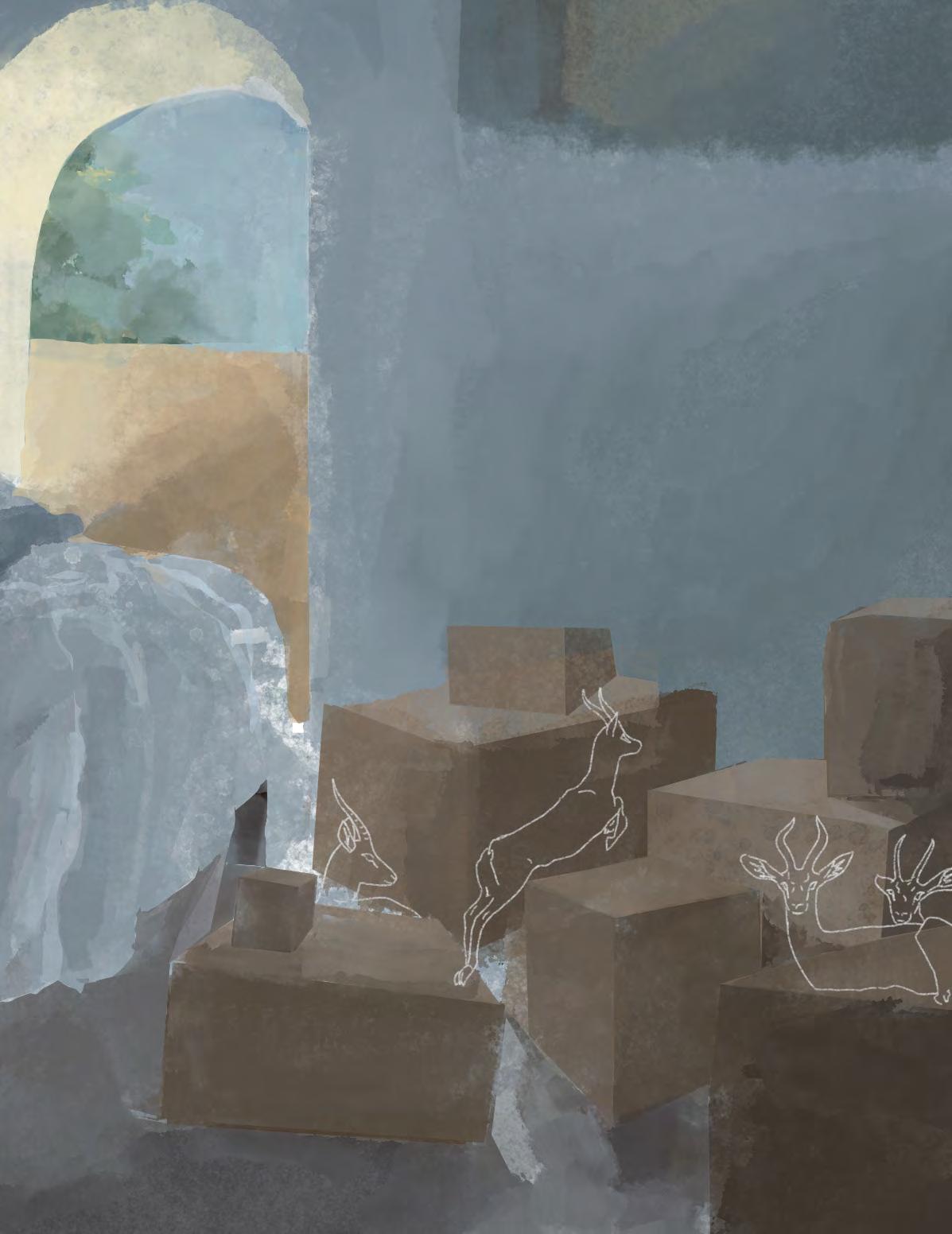


By Sophie Fishman
On October 23, 2023, Tufts Students for Justice in Palestine posted a call for a walkout in protest of the siege on Gaza, inviting participants to “set [their] alarms and wear [their] keffiyeh.” As similar protests and actions have swept the globe in solidarity with the people of Gaza, organizers have called upon protestors to adorn themselves with the black and white tasseled scarves around their necks, shoulders, and heads.
While the visibility of the keffiyeh has increased in the weeks since the siege began, the item itself is said to have originated in Ancient Mesopotamia. In its original form, the scarf would have protected men from sand, dust, and direct sun exposure. While Levantine men have worn the scarf for generations, the keffiyeh was first worn by Palestinian freedom fighters during the Arab Revolt against the British Mandate in the 1930s. During this period, Palestinian fighters used the keffiyeh as a means of concealing their identity, making it difficult for British authorities to identify the instigators of these rural uprisings. By the 1960s, the keffiyeh came to symbolize the Palestinian national movement, frequently adorned by Palestine Liberation Organization leader Yasser Arafat. Between 1967 and 1993, when Israel effectively banned waving the Palestinian flag in Gaza and the West Bank, many Palestinians instead opted to wave the keffiyeh as a source of national pride.
The keffiyeh is typically woven from either cotton or linen. While the black and white pattern has become the most prominent in widespread protests, the keffiyeh is produced in a variety of colors. One example is the Jordanian red and white keffiyeh, which has been adopted by Marxist Palestinians as a means of differentiating themselves. According to Hirbawi, a West Bank manufacturer of the keffiyeh since 1961, the keffiyeh is made from “a specific cross-stitching technique developed over
decades,” and the intricate patterns that decorate the piece are “based on historic landmarks, and elements of Palestinian culture.” One of the main keffiyeh patterns is the olive leaf. Today, between 80,000 and 100,000 families in occupied Palestinian territories rely upon olive products as a source of income, and the inclusion of this symbol has come to represent Palestinian resilience and attachment to their land.
“As a part of this long history of support for homespun production, the growing demand to purchase a keffiyeh from a Palestinianbased business in and of itself represents a stance against colonialism.”
As a symbol of Palestinian liberation, the keffiyeh reflects a long history of indigenous clothing used symbolically within political and cultural decolonization movements. Beyond the keffiyeh, another historical example of this phenomenon within decolonization efforts against the British Empire is the Gaelic Revivals of the late 19th century. As calls for Irish independence swept the island, cultural nationalists “scoured academic texts for clues about what indigenous, ancient Irish folks wore
so this could be replicated in their gatherings and promotional tours. The result was a veneration of the léine (a kind of tunic) and the brat (a mantle),” wrote Sarah Mass, an assistant professor of history, in a statement to the Observer. Just as contemporary protestors reach for the keffiyeh as a unifying symbol of Palestinian liberation and the indigenous roots of the cause, Irish anticolonial protestors represented themselves with visible symbols of indigeneity.
Another particularly poignant example of indigenous clothing utilized symbolically within American protest history is the Ghanaian kente cloth. These textiles originated from the Asante cultural tradition, emerging as early as 1000 B.C., and were initially used to dress kings and their courts. Much like the keffiyeh, each color and pattern reflects varied symbolic meanings. For instance, gold symbolizes serenity, green represents renewal, and black represents spiritual awareness, among others. Additionally, each kente weaver gives a name to their pattern motifs, usually derived from proverbs, giving each kente cloth a unique significance.
The kente cloth came into global focus in 1958 when Kwame Nkrumah, the first prime minister of Ghana following its independence from British rule and figurehead of the African decolonization movement, adorned the textile during his White House visit to meet with President Eisenhower. Since the 60s, the kente cloth has become a prominent symbol in both African decolonization movements and the Civil Rights movement in the United States, and the piece continues to be used in contemporary Black American activism. Donned by many Black college students at graduation ceremonies, the kente cloth has come to represent the perseverance and pride of Black students in the pursuit of higher education. Recently, the piece has resurfaced as a political symbol of protest. In 2018, the Congressional



Black Caucus wore kente cloths in an act of protest against Donald Trump’s State of the Union address. The kente cloth, like the léine and the keffiyeh, demonstrates the important role of indigenous clothing items that symbolize resistance in the face of modern-day issues of neocolonialism and oppression.
In addition to having symbolic significance, the increasing use of the keffiyeh in recent anti-colonial protests provides direct support to Palestinian economic interests and businesses. The New York Times reported that Hirbawi, the only keffiyeh manufacturer based in Palestine, has seen unprecedented demand for keffiyehs, and the company has “sold more than 18,000 [scarves] in October.”

to “[buy] directly from Palestine and then also, [make] sure to match that with your own consumer boycott of Israeli companies and Israeli goods.”
The recent visibility of the keffiyeh in protest movements across the world has garnered adverse and even violent reactions from opponents of the Free Palestine movement. Schools in Berlin have banned the scarf for fear of it posing a “threat to school peace.”
On November 6, a video went viral of a woman hurling her cell phone and hot coffee at Ashish Prashar, who was wearing a keffiyeh, along with his 18-month-old son, accusing them of being “terrorists” and “Hamas supporters” at a public park in Brooklyn.
This support for indigenous economies also aligns with a legacy of supporting textile economies as a means of anti-colonial resistance. Mass writes that, historically, the British colonial economy relied upon extracting natural resources for centralized manufacturing. Therefore, “support for colonial manufacturing was arguably always an anti-colonial act.” While Professor Mass describes this as the case for Ireland’s manufacturing specifically, this is also true in “the most famous example of anti-colonial manufacturing and consumerism—Mahatma Gandhi’s Khadi movement between the world wars.” Gandhi argued that India should be economically self-sufficient to decolonize from Great Britain, encouraging individuals to only wear and purchase homespun khadi. In both the Irish and Indian pushes for decolonization, economic divestment from the industries of the oppressor was one of the most potent forms protest took on, especially for women, for whom “their purchasing power was the most powerful form of registering allegiance,” Mass writes.
At Tufts, members of SJP participated in this economic form of resistance at the club’s “Palestine Solidarity Concert” in April 2023 and the November 10 sit-in. At these events, club members purchased keffiyehs from a Palestinian business and “sold” them in exchange for donations to Gaza Mutual Aid organizations. For an anonymous SJP member, economic support is two-fold, believing it is essential
Most recently, on November 25, three 20-year-old Palestinian college students, Hisham Awartani from Brown University, Kinnan Abdalhamid from Haverford College, and Tahseen Ali Ahmad from Trinity College, were shot in a suspected hate crime in Burlington, Vermont. At the time of the shooting, two of the three students were wearing keffiyehs. In the wake of this act of violence, student organizers have called upon fellow students to wear their keffiyehs in solidarity with the three victims. For the anonymous SJP member who gave comment for this article, at this moment, “it feels extra important to show that you’re proud to be wearing this and not scared to be wearing it. It’s important to see a sense of unity among your community.”
From the keffiyeh to kente to khadi, indigenous protest clothing acts as an expression of collective solidarity. When protestors reach for the keffiyeh, they are participating in a centuries-long global tradition of unity in the face of colonial aggression.



By William Zhuang
The use of generative artificial intelligence tools has remained a nonstop conversation since their rapid popularization in the past year. Most commonly illustrated by generative chatboxes like ChatGPT and Google Bard, the world has been marveling at AI’s ability to complete conventional tasks with unprecedented efficiency. These tools effortlessly generate responses according to the user’s request, within seconds ranging from Christmas gift ideas to sports predictions to five-page essays to even computer programs. While the immediate benefits of these tools are undeniable, the unsettled ethics of their usage have accompanied generative AI since its inception.

Currently, there is no clear definition of “fair use” for generative AI, and the lack of comprehensive understanding of its usage has become drastically disproportionate to its accessibility. Colleges and universities were alarmed when the usage of these tools to complete

assignments became widespread among student bodies, with one study reporting that 56 percent of 1,000 surveyed students have used AI on assignments or exams. AI’s capabilities have also caused reasonable fear of job displacement, as some believe it has the potential to replace 800 million jobs worldwide by 2030. Most recently, generative AI has expanded its cloud of controversy towards the music industry, once more sparking countless debates.
Today, generative AI companies are offering services for users to create music in a variety of ways. Applications such as Soundraw are trained on principles of music theory, allowing users to generate compositions by describing their ideal vision in terms of mood, tempo, melody, and more. On the other hand, tools like AIVA allow the usage of pre-created material to generate new content, advertising its ability to produce variations of existing songs. Some of the output may include rhythms and lyrics similar to existing music, whereas others fully adopt the style and vocal profiles of famous artists. Out of these general categories, the latter has garnered significant pushback from industry professionals, as it permits the unauthorized usage of copyrighted material.
On social media platforms, users are creating and posting imitation songs made with AI technology for profit without the artists’ consent. One particular account on TikTok called “@ghostwriter977” has attracted over 250,000 followers. Despite being flagged and banned by
the platform, this account has managed to retain its popularity and continues to post the same type of content.
The account’s most recent post, which has received just short of 100,000 likes, features a song entitled “Whiplash” that clearly imitates popular hip-hop artist Travis Scott. The dark, eerie trap melody emulates Scott’s signature style, while the autotuned vocals and high-pitched ad-libs are virtually indistinguishable from the original artist. More comically, the song even features a beat switch and a similarly AIgenerated verse from fellow rapper 21 Savage. The comment section captures mostly positive reviews. Some users are demanding the song to be uploaded to streaming platforms like Spotify, and others are calling for “@ghostwriter977” to be nominated for major awards such as the Grammys.
However, there are also voices questioning the ethics of this trend given that the song blatantly replicates artistic identities to attract attention.
“In my opinion, AI could be a positive force for production in music, however, I have seen time and time again it being used to create soulless works and [detering] some artists from a much harder, complete creative process,” said sophomore Connor Howe in a written statement to the Observer
This divide on AI can be felt in the music industry itself, illustrated by Ed Newton-Rex’s resignation as the vice president of audio at Stability, a generative AI company. In his op-ed for Music Business Worldwide, he attributed
this decision to the company’s stance that “training generative AI models on copyrighted works is ‘fair use.’’’ According to Newton-Rex, this viewpoint is widely shared across various pioneer companies in the generative AI industry. Though he maintains his confidence in the potential benefits of generative AI, Newton-Rex states he “can only support generative AI that doesn’t exploit creators by training models—which may replace them—on their work without permission.”
Luis Cárdenas, who works as a specialist of Creative Administration at Columbia Records, independently agrees with Newton Rex’s standpoint in his written statement to the Observer. When asked about the concept of fair use, he writes that “to consider such uses as ‘fair use,’ you must first ensure that the party (in this case, the recording artist) has agreed to their use of likeness (their voice) in such a way.” Unfortunately, this is often not the case, as seen in Puerto Rican artist Bad Bunny’s outraged denunciation of AI imitators in his WhatsApp channel, telling fans who enjoy these generated songs to not attend his upcoming tour.
Regulation may prove to be a difficult task, as the accessibility of generative AI has spread far beyond the professional level. “It’s challenging to prevent individuals from using copyrighted material for training AI models, especially when this material is publicly accessible online,” said Patrick Mauboussin, a computer science student at Georgetown University who has been working closely with generative AI since the GPT language model’s polarization.
of this will not be settled for a long time, if ever. As long as these algorithms are in operation, there’s going to be controversy over how they are used.”
Nevertheless, Mauboussin believes that artists’ role will not merely diminish as a result of generative AI’s competence, Mauboussin stated “These tools are better seen as assistants rather than replacements highlighting the importance of human expertise in guiding AI to achieve desirable results.”
Regardless of these nuances, Cárdenas thinks the general public should keep an open mind about the potential of AI. Despite how it may be misused in instances at this current stage, he explained that“We ought to consider whether our fear of change is interfering with our ability to understand these advance ments and how we can make better uses for them.”
Apple/iTunes disrupted physical album sales with the convenience of digital purchases and musical libraries... All of these developments completely altered the traditional ways in which recording contracts, access to music libraries, or sales and charts were determined,” Cárdenas said.
Lehrman agreed, suggesting that the concept of AI music may not be as jarring as it sounds. “I think the whole idea of using machines to generate music is not a new one,” he explained, “It’s just that we have these new tools that are much more sophisticated than the previous ones.”
For now, the most pressing issue seems to be the protection of artists’ rights, especially with the ambiguity of AI ethics. “As to whether the average audience could spot AI music or even care, I don’t know,” said Lehrman.“The only people who’d care might be the artists whose work is being mined. If the artists may be properly compensated, it might be able to benefit everybody.”
However, he adds that “the vast majority of contracts favor the large publishers and labels behind the artists, as the artists rarely get to keep all of the rights to their music. If the companies decide to license out an artist’s music to AI companies, the artist may not be able to do anything about it.”
While the impact of these potential issues remains to be seen, the train of AI has already been set in motion with all its thrill and terror. As Cárdenas says, “AI has already entered the zeitgeist of the music space, so the future is pretty much now.” O

Tufts Music Professor Paul Lehrman expresses a similar concern, “There are going to be many, many legal cases I think we are in for a long struggle in which a lot

In his eyes, drastic shifts that could come with the continuous development of generative AI are not unprecedented. “We can look at the last 20 years and analyze the impacts of Napster or how
Let’s
By Leah Cohen
During my first semester at Tufts—back in the pre-COVID dark ages—I was lucky enough to be assigned an upperclassmen peer mentor through a since-retired program run by the theater organizations on Pens, Paint, and Pretzels (3Ps). I hit it off with my mentor, Megan, almost instantaneously; they were on campus for orientation week working as a director for the orientation show for 3Ps—a play called The Realistic Joneses by Pulitzer-winner Will Eno. I was delighted to be invited to grab coffee with them before classes began.

At this coffee date, Megan’s phone buzzed repeatedly. It was the production manager of the show, confirming the content warnings the play would receive in its digital program. I was a bit confused; having read the play in high school, I did not recall any instances in the show of rape, overt displays of physical violence, nudity, or any other challenging content I had previously understood to be subject to content warnings. Megan informed me they were being asked to include a content warning for “divorce and adultery.”

For those who have not read the play, this warning would essentially give away the entire twist of the show in the program.

Let me be the first to state that content warnings play a critical role in our media consumption, particularly as digital media and depictions of violence become more realistic (and often disturbing). Additionally, content warnings play a useful role in combating censorship; during the days when the Hays Code ruled over Hollywood, most mature content could not be displayed at all. With content warnings, creators and artists can include these topics while still limiting some audiences with age-related ratings and allowing viewers to opt-out of seeing gratuitous violence.
However, as a theater maker and sociologist interested in media studies, I am increasingly concerned by the lack of distinction between content that can be traumatizing and content that is discomforting.
Here is the thing about theater: generally speaking, for the spectator, there are no consequences. That’s what makes theater different from real life. On stage, Julius Caesar gets stabbed with a fake retractable knife, and fake blood oozes out of a pristine white shirt; an hour later the actor comes out to bow. It’s not real violence. It is pretend violence. It is the representation of violence. Depictions can inspire real feelings if done well, but there will always be the reveal at the end—the lights come up, the ushers tell you to go home, and no one gets permanently injured or hurt. By design, the theater is a safe space to experience challenging and disturbing scenarios; you can learn and be provoked and horrified
and disturbed all within the walls of the theater, because at the end of the show, everything is reset.
Not only can you be challenged within the safety of the theater, but I also believe that you should allow yourself to be challenged by the theater.
There is no universal standard for content warnings; every theater company makes the determination for themselves, unlike in film and television, where national standards dictate age and rating restrictions and generally inform at least basic content warnings (violence, sex, “adult language”). Particularly in amateur settings like colleges, in my experience, theater groups veer on a side that can only be described as extreme over caution, including warnings for content such as “depictions of religious figures,” “descriptions of violence,” and foul language. The list of “triggering” content seems endless, seemingly covering every instance of human experience in which one feels emotions other than contentment or calmness. Some companies also interpret the play for the audience through the content warnings, making explicit what is intended to be interpretative or left open: a scene in which a man behaves creepily towards a woman is tagged as sexual harassment; a scene in which the protagonist slowly leaves the stage in a pool of white-toned light is labeled as death; a scene where actors gleefully clutch rolled up teabags tied with dental floss is termed “drug use.”
This interpretive warning system can easily change how an audi-


ence experiences a piece of theater. In HAIR: The American Tribal Love-Rock Musical, recently produced by Torn Ticket II (and co-directed by yours truly), there is a moment in which the script calls for three members of the cast “dressed as KKK members” to chant a parody line: “What do we think is really great? To bomb, lynch, and segregate.” In our version of HAIR, instead of putting these cast members in white hoods, we put them in white dunce caps and immediately followed that moment with the entire rest of the cast pretending to kick and beat them to the floor. I should hope that anyone with the media literacy of a 12-year-old reads this as satirical and understands this not to be an endorsement of the KKK nor of any of the disturbing things depicted by the lyrics. Regardless, we were asked to include in our program “KKK iconography,” along with a whole host of other warnings.
In another moment in the show, a Black member of the cast sings the iconic song “Colored Spade,” which mostly amounts to a list of slurs and stereotypes historically used to denigrate Black Americans. The song is intended to shock a white audience with its proud reclamation of these disturbing words, using rhetorical violence to call attention to real-world material violence. The purpose of including the song in the show is to confront audiences with this discomfort and demand that they hear their history repeated back to them and answer for it. We were also asked to include a content warning for racial slurs, which severely undercuts the shock factor of the song, and therefore the purpose of the song in the context of the show as a whole.

The content warning for racial slurs gives the audience the opportunity to opt-out or recuse themselves from this confrontation. In real life, however, there are no opt-outs. Especially with a piece of historical fiction like HAIR, I worry that the freedom
to opt-out presents an opportunity for sanitization that is unfair to the story itself and the real people it depicts. To pay respect to their stories and the real hardships they experienced, I believe it is incumbent upon us to face these depictions head-on and allow ourselves to feel the weight and effects of them fully and learn from them.
Returning to The Realistic Joneses for a moment: if you know the divorce is coming, the play is ruined. The twist is revealed before the tension can be built. What, then, was the purpose of the carefully crafted storytelling from the playwright, director, and performers?
Ultimately, I fear we have all become afraid to feel in the presence of others. We have become so mortified by the thought of being publicly vulnerable. We are afraid of being affected by things in the presence of our peers. Thus, we have lost our ability to truly experience theater and art in their purest form because we have lost the willingness to deeply connect with our community.
So I ask: if we cannot allow ourselves to grieve, cry, be terrified and heartbroken, how can we expect to laugh, be elated, and experience the euphoria and catharsis that follow tragedy?
I fear that words are losing their meaning—in particular, a word that is becoming seemingly meaningless is the word “trauma” (see also: triggered). Trauma is a medical term that, according to the American Psychological Association, describes “an emotional response to a terrible event like an accident, rape, or natural disaster.” Trauma is the consequence of unimaginable horror: the loss of a loved one, the violence of assault, the grief of natural disaster. It must be intentionally distinguished between the experience of sadness or rememory when confronted with a situation that is familiar and painful to you. My parents underwent a messy divorce when I was 11; I am not traumatized, and I

am not triggered when I see depictions of divorce in art. Do I feel deeply affected by these depictions due to my familiarity with the emotional toll of divorce? Of course. Does seeing these depictions cause a deep emotional response or release, like a catharsis? If the art is well done, hopefully. But I do not believe I should be shielded from these depictions, as often they can be just as healing as they are painful.
Because again, art is not real. Art can be a vessel through which you process grief that was too immediate in the moment to understand. Art can be the space in which you confront your past, without the consequence and pain of the present. Art can heal wounds and help mend what was once broken. I hope that we can all unitedly step forward to experience and be challenged by art and the power of theater, and allow ourselves to be broken and healed again in the process. O


By Veronica Habashy
This summer, I watched 2001: A Space Odyssey for the first time. The air was tepidly held by the hills enveloping the Hollywood Bowl, the stage was iconically arched, and the Hollywood sign gawked back at every wine and cheese board seated before it. I sat through all 149 minutes in a trance of raspberry-tart red wine and the steady hum of mosquitos smugly tucking in at my exposed ankles. The cinematography indulged shamelessly in the color wheel, the score was so iconic it was trite, and I actually believed I was enjoying this so-called seminal work. My engagement lasted until approximately the moment when the chimp threw the bone and it cut to the spacecraft, a scene I had already parsed in my high school film class. I scoffed at the hoots and hollers, but also fleetingly feeling like I got it, I braced myself to enjoy what I knew I should. But then the rest of the film happened, and I was like: okay, and?
I make decisions of preference almost immediately. Call me presumptuous, but every single thing I hold nearest to my heart was decided upon within my first moments with it. The converse was true of 2001, no matter how hard I tried resisting the instinct to detest it.
In the opening sequence of what might just be the antithesis to 2001, the film Amélie’s leading lady is characterized by the things that she enjoys: dipping her hand into barrels of dry grains, cracking into glazed surfaces of crème brulée with tiny spoons, and skipping stones at St. Martin’s Canal while “cultivating a taste for simple pleasures.” Amélie’s pursuit of ordinary joy is the catalyst for the adven-
tures that follow, made shockingly simple by the childlike optimism that colors her pursuit of the unknown. It is through her unbiased joy that Amélie teaches us the potential for invaluable, plain loveliness within the quotidian.
If I were to dilute my conservative upbringing into one surviving aphorism, it might be that being a good person means not giving into any of the various impulses that are part of being human. In response, I developed a range of internal habits rather strange for a young child: for example, deliberately seeking extra indulgences was gluttonous (see: stash of Hershey’s kiss wrappers in my bookcase), and I never (ever) woke up past nine a.m. on a Saturday.
Growing up and out of my rigid, juvenile hyper-self-awareness has meant flowering into the pleasant discovery of the joy that is in my own hands. It took me this long to realize that I am not always obligated to find the closest parking spot, to take four freeways on the fastest route home, or to follow my grocery list to the T. I can, if I want to, just buy a slice of cake. I can also switch what book I am reading should I develop a sudden hankering for a completely different one. Grappling with why exactly I am suddenly open to my own cultivation of pleasure, I resign to the simple fact that life is simply too short. (At least I didn’t have to see my life flash before my eyes to come to such a revolutionary conclusion.)
I was shocked to realize that this epiphany was not about the discovery of such simple pleasures as much as it was about the recognition of my own free will.
I learn a lot from my younger sister, who frequently stays home from events, avoids impending deadlines, and makes plain buttered noodles for dinner in the name of “protecting her peace.” I take a page from the book of the people who would walk into the ice cream shop I once worked at, presumably without occasion. I frequently catch my friend Talia purchasing ribbon in assorted colors for the sake of spontaneous adornment and take notes.
My own freakish self-regulation, symptomatic of long-term neuroticism, has until recently stopped me from diverting from utilitarian habits. Inadvertently, this has meant regulating pleasure for the sake of keeping it special and sweet. Pleasure in moderation. When comparing subconscious differences between an anxious being like myself and my aforementioned younger sibling who would never give up a good time because of an inconvenient commute, or worse, wasting gas, I come up with one thing: self-awareness.
Why do we so seldom choose to devote free will to simple pleasure? I can’t imagine I am the only person like this. My mother, after all, honestly prefers fluorescent lights in our house for their illuminating abilities (i.e. pleasantness is secondary to visibility). What exactly moves us to believe we can’t include sweetness in our everyday lives? What defines the difference between a day where we do everything in the name of productivity and one where at each corner there is a different barrel of grain at which we do not think twice before stopping and plunging our hands?
I remember the Goethe quote I read in a footnote of my senior year copy of Freud’s
Civilization and its Discontents, “Nothing is harder to bear than a succession of good days.” I think about this a lot—in the case of overly lucid dreams, forgotten assignments I swore I wouldn’t neglect, oranges gone bad in anticipation of a mythological peak ripeness. But as I try to understand why exactly we aren’t all, naturally, Amélies in our own right, I think of that quote too. I think of self-preservation that is also second nature and rooted in a generalized anxiety about things potentially being too good to be true.
When I was in high school I was obsessed with the idea that nothing is “completely good.” I thought myself profound to come to this conclusion while my friends were taking long drives with no objective but to “go for a drive” and wasting their gas. Now that just reeks of jaded adolescent drama. Obviously, nothing is completely good, and certainly nothing is good all the time.
There are so many things that have the potential to bring us great joy which are simultaneously completely no-stakes. The French phrase “metro, boulot, dodo” onomatopoetically summarizes the experience of the human “rat race,” and when we learned it in my freshman year French class, my teacher paused to remind us that there is always opportunity to choose to enjoy the monotonous days the phrase composes. Was I crazy for finding both sides of the concept equally overwhelming? Maybe it’s easier to choose that droning three-beat tune than to consider entertaining every possibility of self-determined joy that is out there. To me, figuring out how to formulate the perfect balance between indulging in sweet things and avoiding drowning amongst all those good days was a riddle.
The truth is that I have never actually finished Amélie. Frankly, I don’t care. I rapidly grow bored of most movies, regardless of charm. I have also finished many films I was conditioned to adore (see one multicolored Kubrick quote, unquote masterpiece) and remain unchanged.
The truth is also that gas expenditure makes me uneasy. I don’t enjoy going for drives, nor 2001: A Space Odyssey, nor sleeping in. I am grateful for rejecting pleasure in the process of learning it. Amélie encounters her favorite things and takes
them in stride, so through trial and error I ardently pick up the things that do bring me joy—spontaneous glasses of juice, walking out of a movie, taking my time— and they are all the more special for it. Life is not a riddle if you remember that each day you can either go knuckles-deep into the grains or you can rush past them, and both are equally important.
The story of our pleasures is one of growth. I acknowledge and embrace my human compulsion for restriction. I grasp the novelty of pleasure by recognizing my history of self-regulation and how I am now pleased to resist it. I discover joy not just in the feeling or the acts that render it, but also the ways it surprises me. As Wendy Cope writes
about her orange, which I assume is perfectly ripe because I do want to believe in that sweet place, “it made me so happy, / as ordinary things often do /… The shopping. A walk in the park. / This is peace and contentment… I love you. I’m glad I exist.”





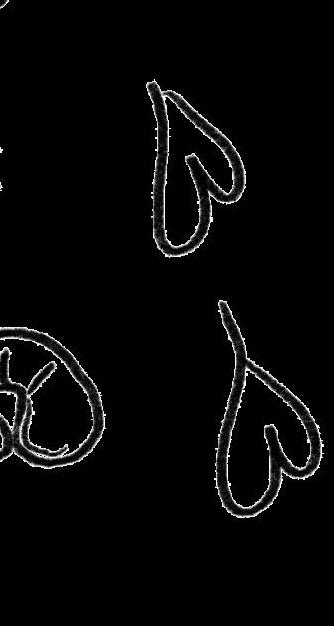
Ispent about a year, from the ages of two to three, carrying a stuffed, felt Beanie Baby moose with a brown hide and rounded orange antlers around with me. It was gifted to me by the elderly woman who lived across my family’s apartment complex in Clifton, New Jersey. She had seen me, a rotund, stumbling toddler, the day my parents and I moved in, and the very next day she had brought over a trash bag swollen with toys. I cast all aside but the Beanie Baby moose.
I attribute my attachment to the toy to my intense devotion to objects when I was a child. I remember all of the building blocks that I played with, the set of
wooden toys that I had acquired when I was young: the yellow blocks, red pillars, green triangles. I remember that I used to lay the yellow wooden blocks flat on the ground in order to construct a vast, open floor and would forge a gate with the pillars and triangles to represent a shrine of some sort. When my father attempted to pull me away from my construction to eat dinner, I squirmed and shrieked and pressed the round wooden pillar in my fist, wet with tears, against his

cheek in protest. I still remember the feel of the piece in my hand.
I carried this intense devotion over to my toy moose. Perhaps it is not even the appearance of the toy that I cling to in memory (it was a badly bruised, poorly washed thing), but the feel of it in my hand, the weight of the beads inside it that would rest in my palm when I spread it out flat, or the feeling of the toy when I would roll it over to the edge of my hand, when I tipped it and the beads shifted, filling the back legs of the moose till it swelled un evenly like a water balloon held by its knot.



There is a photograph of me as a tod dler holding this toy hanging in the hall way of my home back in New Jersey. The photograph was taken by my parents when we visited Baltimore. I’m wearing a pink puffer coat, the hood lined with fleece, and my hair is chin-length, bobbed and round ed; my bangs reach just past my eyebrows. I’m holding the moose between my hands. I am not looking into the camera, but downwards and to the left, lost in what ever interior world five-year-old me spent her time in (a consequence I attribute to growing up as an only child). My parents told me that I was shy as a kid, muted and passive, curious yet often lacking in energy, harmlessly selfish as any child is. But such descriptions are abstract and confusing to me. I have no personal memories verifying such accounts. I only possess vignettes in my mind, none of which possess an internal monologue of any sort. I wear my hair long now, and I don’t remember the last time I had bangs, besides in that photograph.
If this story ended in a typical man ner, I would have gone out to the city one day with my parents, gripping the baby moose between my hands, before acciden tally leaving it on some department store shelf or dropping it on the subway. I would discover that my hands were empty on the car ride home. My parents would say, “Oh honey, there’s nothing to be done,” and I would weep and wail, and then one day, I would forget about it. But it didn’t happen



like this. I did lose the toy, but I don’t remember when or how, if I lost it at five or at fifteen.
I probably did really love this toy, I probably even believed it had a soul of some sort—but this is all speculation, no better than an outside observer peering through a window into a dinner party they aren’t a part of. I was this girl at some point, and I now didn’t know her, and it wasn’t until nearly 15 years later, at age 20, by mischance, in jest, a glance at an old photograph, that I remembered that I owned that toy and how I loved it before I lost it. I suddenly realized my hair hadn’t been short in many years and I couldn’t remember why I loved that toy. I didn’t drop it, I didn’t leave it behind. I lost it unknowingly, in a haze. It was 15 years later that I became grieved, delirious with regret: how could I have let myself lose it?





carried, and all I’ll have to say is “It’s gone, it’s past.” In a moment of freedom and loss, I’ll brush aside the things that meant everything to me then, that mean everything to me now, as though they’re dust, lint, and I’ll think to myself, how could I have let that happen?
The versions of ourselves and the objects we have owned will come and go, slowly, without acknowledgment, without recognition; against our will, against our knowing. It will be a look over the shoulder as an afterthought, by chance, in jest, to realize that who we were has gone and passed. Who knows, I can hardly remember. I’m not the same person I used to be.
many ways, it is a futile question. We are all growing and changing each day, and common sense tells us that the person we are now is not the person we were then. Certainly, the things I carry now are not the same things I carried when I was two or ten or fourteen. The things that we hold in our hands and roll between our fingers in our pockets eventually lose their warmth, and we forget about them. They are relics of the past, versions of ourselves that we don’t quite remember. time to time I ask my parents about themselves when they were my age or younger, but their self-narratives are hazy and uncritical. “Your father was a real troublemaker,” my mother says, and my father shakes his head and waves his hand at this unprovable account. “Who knows,” he says, “I can hardly remember.” My mother has similar sentiments. “I’m not the same person I used to be,” she tells me. At 16 my father started carrying a pack of cigarettes in his front pocket and ran away from home for the first time when his father died; now he keeps a pair of reading glasses with him and plays pickleball on the weekends. When my mother was a child she brought around a jianzi with her and woke up early to catch birds; at 29, she left for America with a suitcase half-filled with books and a wad of cash in her pocket. appears to me an inescapable fate, and I wonder about the day when someone will ask me to recall who I was, or what I







By Spencer Vernier

Love is a cliff,
A clear, cold curve of stone, mottled by stars… —James Wright, “Sappho”
Through coarse branches. Elusively rendered, Sun’s glow flushes daisies.
Porcelain color rushes the stems of dawn.
Folding outward like those leathered Sicilian fishermen Who sing into the sea, The body is struck with remembrance.
Caldini’s flowers dance with the day, De Seta’s Children dance with the sand beneath their toes. Quiet, I lie twisted among sheets, wishing I too could twirl under Earth’s boastful star amid endless white, yellow, green Or alongside the waves of a glorious dusk-evening (Their watery brush scatters bits of salt on the beach)
Fragments collapse into one darkness, distant islands fold inward. The flora sway, stretching into silken rapture between the sun’s swell.
A last, faint, orange warmth touches The bloom, hours earlier caressed by first light.
Love __ _ bitch
Major Red Sox loss? 20 Chem. unit
Novel idea?
Morning waffle brand
Autumnal snap? 26 Act Roman, in a popular saying
Top _'___ morning to you!
Famous talker? 30 ____ Lanka 31 Got it! 33 Bicycle, en France
Want a break from the ___? 35 Citrusy Spanish dance? 40 Classic arcade game, in brief
Ocean Vuong, for one
Final resting place 43 Of course, for long
Email abbreviation of urgency
50 Cultured pancake ingredient?
55 Stallion or buck, for two 56 Bobby ___, key Black Panther activist 57 Green band 58 Where you might drive your chevy to the levee...or a hint to four clues in this puzzle 61 Standard organization
Backcombed
Drop down 64 Film music, for short 65 Actor Ed and more
___ rea
Italian pronoun
Famed fableist
Amount to turn it up?
Neighbor of Kerala and Tamil Nadu
Fatherly prefix
Dessert for two?
DnD race
Peeled, as an apple
Spiked dinosaur 12 Plot containing mint, lemon verbena, or lavender, for instance 13 Water filter, in reverse
The world, some may say
Rainbow children's toy
Mechanic of The Mandalorian
____ Giovanni
Lovers of ere
Slaying the Nemean Lion, for one
Screen
Midwestern syllable 37 Opposite of expert, for short 38 Stoner?
American colony
Doctrines
Corn, wheat, or rice, as crops
Greek peak
Radiohead hits?
Short
Dies 52 The early bird catches the worm, for one
Mango yogurt drink 54 Where Phoebe Bridgers took a day off
Comparative suffix
2000s music player





werkshop!

























